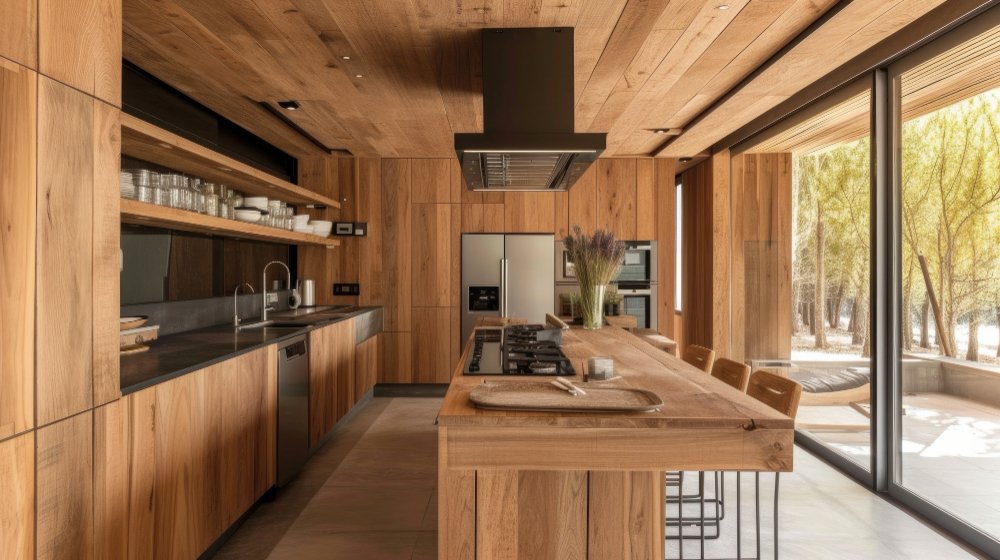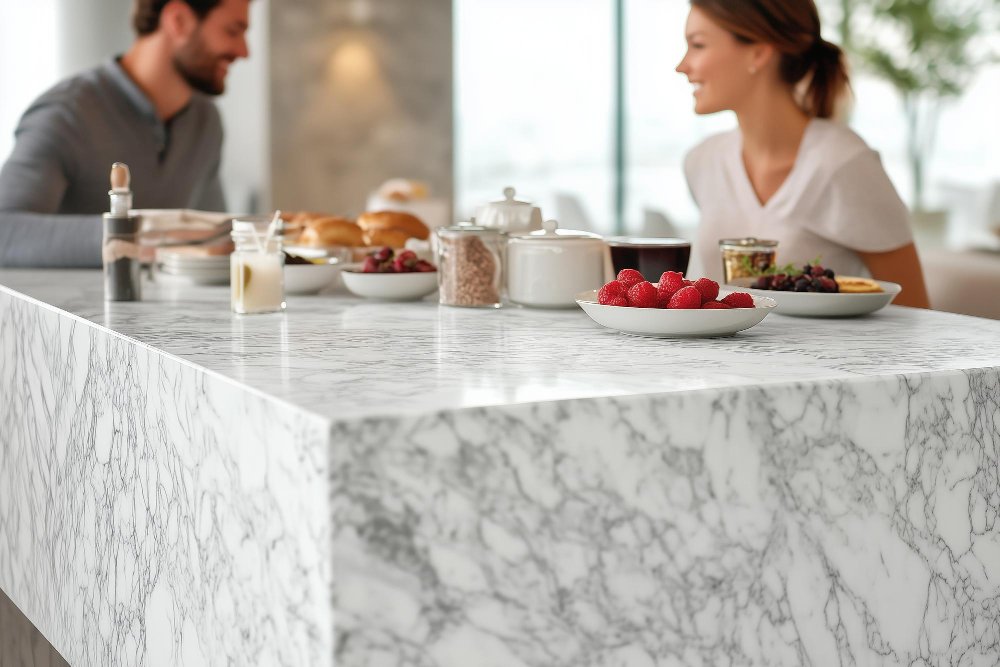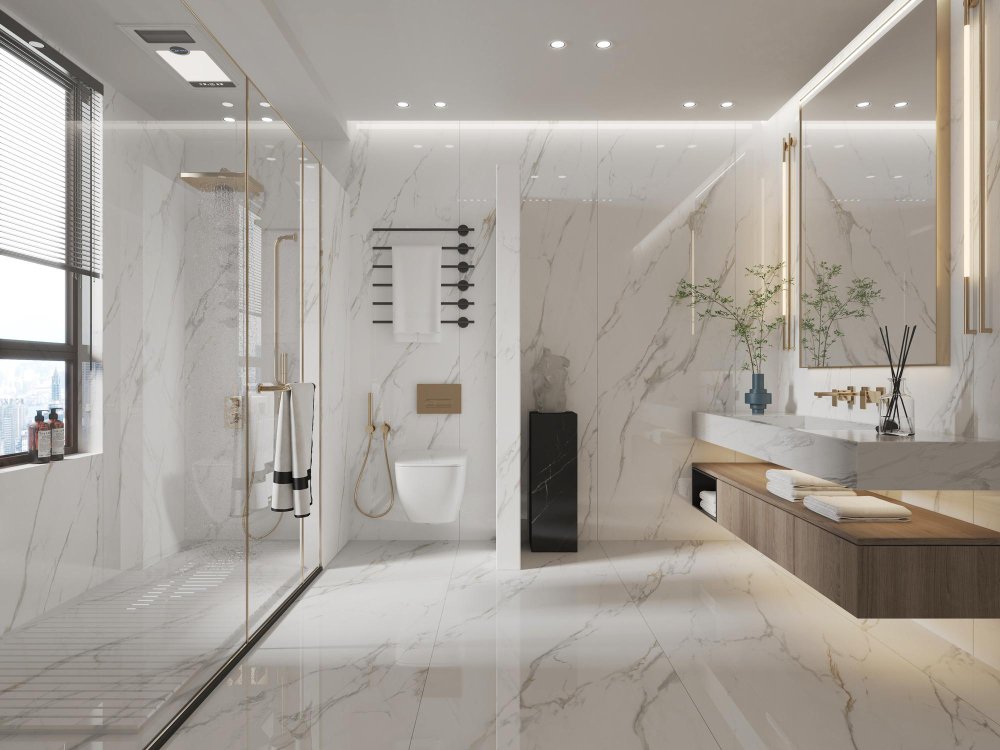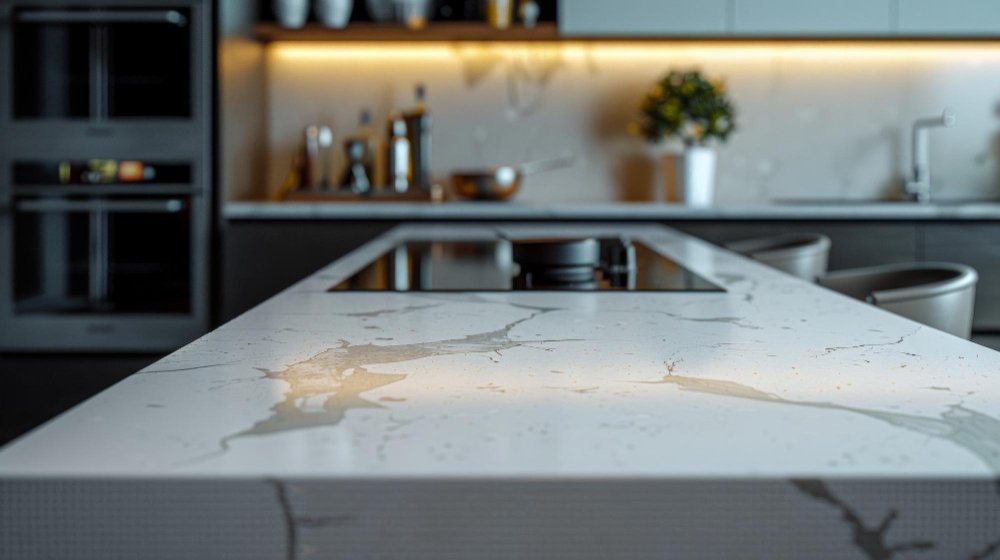When planning a remodel, it’s easy to focus on layout, style, and budget — but what about the impact your choices have on the planet? Incorporating sustainable materials into your renovation not only helps reduce environmental harm, but also creates a healthier home for your family. From bamboo flooring to recycled countertops, here are the top eco-friendly materials that blend beauty, durability, and responsibility.
1. Bamboo Flooring
Bamboo is a fast-growing, renewable resource that’s stronger than many hardwoods. It brings a warm, modern look to any space and is available in a variety of stains and grains.
Why it’s great:
- Grows quickly without needing pesticides
- Naturally anti-microbial and water-resistant
- Available in engineered options for stability
2. Recycled Glass Countertops
These striking countertops are made by embedding crushed recycled glass in a durable resin or concrete base. They add unique character and color to kitchens and bathrooms.
Eco-benefits:
- Diverts glass waste from landfills
- Long-lasting and easy to clean
- Requires minimal maintenance

3. Reclaimed Wood
Instead of cutting down new trees, consider sourcing reclaimed wood from old barns, factories, or shipping pallets. It brings history, texture, and a rustic vibe to floors, walls, and furniture.
Bonus: Using reclaimed wood helps reduce deforestation and gives your home instant charm and authenticity.
4. Low-VOC Paints and Finishes
Many traditional paints release volatile organic compounds (VOCs) that can harm indoor air quality. Today’s low-VOC and zero-VOC paints are safer for your family and the planet.
Great for:
- Bedrooms and nurseries
- Enclosed spaces with poor ventilation
- Homes with allergy-sensitive residents
5. Cork Flooring
Harvested from the bark of cork oak trees without damaging them, cork is a resilient, sound-absorbing flooring option that’s perfect for cozy, quiet spaces.
Eco-perks:
- Renewable and biodegradable
- Naturally insulating and antimicrobial
- Comfortable underfoot
6. Recycled Metal Fixtures and Accents
Opt for recycled aluminum, copper, or steel in kitchen and bathroom hardware, railings, or lighting fixtures. These materials can be endlessly reused without losing strength.
Style tip: Recycled metal offers a sleek industrial or modern farmhouse look.
7. Eco-Friendly Insulation
Old-school fiberglass insulation can contain harmful chemicals. Upgrade to options like recycled denim, sheep’s wool, or cellulose made from recycled newspapers.
Advantages:
- Non-toxic and breathable
- Excellent thermal and acoustic insulation
- Often eligible for green building incentives
8. Concrete Alternatives
Traditional concrete has a high carbon footprint. Greener options like hempcrete, recycled aggregate concrete, or fly ash blends offer strong, sustainable alternatives for walls, floors, and foundations.
Final Thoughts
Using sustainable materials doesn’t mean compromising on aesthetics or quality. In fact, many of these options are more durable and unique than their conventional counterparts. By incorporating eco-conscious materials into your next remodel, you’re not just updating your home — you’re investing in a healthier planet and a smarter future for your family.






